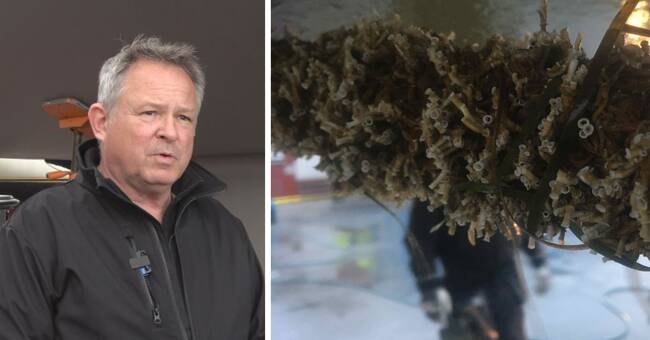In Sweden, the Australian lime tube mask has previously been found in Limhamn.
In Lomma, the finds were made on a boat's propeller shaft, among other things.
- We lifted the boat last autumn to wash it and scrape away barnacles.
Then we saw on the propeller shaft that it was overgrown with something we did not recognize and it was hard as barnacles but longer and more tubular.
We took a picture when we had not seen it before, then we did not think about it again until we received an email from the harbor master about the county administrative board's information about this, says Tomas Bramell, shipyard owner in Lomma.
This type of vegetation causes concern for boat owners.
If it sits on a propeller shaft, it can impair the maneuverability of the hull and cause higher fuel consumption because the boat slows down in the water.
The County Administrative Board shall investigate
- New information emerges that indicates that the species is a greater threat to Swedish marine environments than first thought.
The County Administrative Board and the Swedish Maritime Administration have together assessed that we should try to get an overview of the species' distribution in Skåne, says Jonas Gustafsson, marine biologist at the County Administrative Board of Skåne.
The Australian lime tube mask originally comes from the Indian Ocean or the Pacific Ocean.
It is an alien species in Swedish waters, which for the time being is considered potentially invasive.
This is what the Australian lime pipe mask looks like and it can cause headaches everywhere.
In Lomma, it was found on a propeller shaft on a boat.
Photo: Per Olsson / Länsstyrelsen Skåne
Forms reefs that clog
According to the Species Data Bank, it is a species that has not yet established itself in Sweden but can do so.
The worms build tubes, up to a decimeter long and a few millimeters wide.
When many individuals live close together, they can build the network and form meter-long reefs, which in several parts of the world have caused problems, for example by preventing the function of dust hatches or blocking water intakes.

